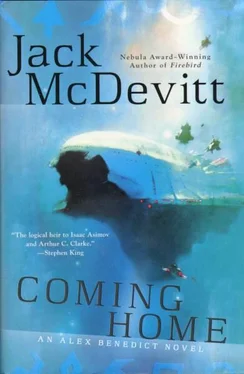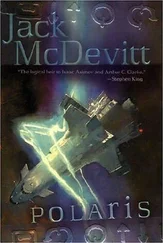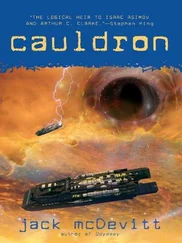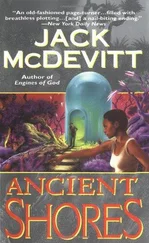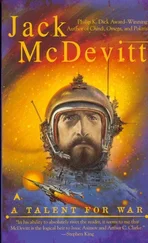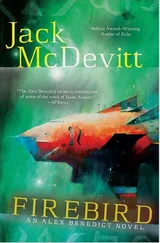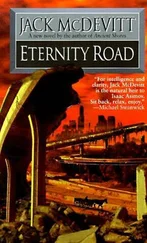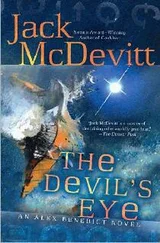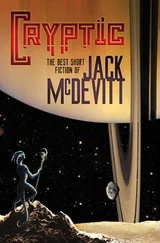“All right. Whatever you want.”
* * *
We switched on our lights. I’d wondered whether some parts of the house, and possibly the artifacts, had torn through the dome and left the asteroid altogether. But no holes were visible, save the one at the entry hatch that had been cut by Baylee. That was where we entered, and made our way past the frozen trees.
“I don’t think,” said Southwick, “there’s much chance that anything survived.”
We went around to the rear of the house. That was where the debris was thickest. Alex had brought a staff, which he used to poke at it. We saw parts of a lamp and a computer and a showerhead. A broken door had been thrown against the side of the dome. Support beams, plumbing fixtures, scorched furniture were piled high. Southwick found an electrical device in the wreckage. We didn’t know what it might have been, but VOYAGER 8 was engraved on its base. Another black box read MOONBASE. “Pity,” Alex said, “Baylee didn’t show a little patience.”
Southwick agreed. “I know. I feared for a while that he’d become suicidal. He was never the same after this.”
We moved carefully, trying not to walk on anything. One side of the house was still standing, more or less. We crossed onto the area that had constituted the storage rooms. It wasn’t as dangerous as it might sound because gravity was almost nonexistent, so we didn’t need to worry about falling through damaged flooring or having what remained of the house collapse on us. “Look at this,” Southwick said. He’d found something inside some plastic packaging.
Alex shined his lamp at it. “It’s a game, I think.” The packaging was mostly intact. The lettering was ancient English, but there was a picture of a ringed planet and a primitive spaceship. We opened it and found model rockets and astronauts and a set of dice. He produced a plastene bag and placed the pieces inside. Then he held the box to give us a better look. There was an inscription, most of it not legible, but I could make out a date: 2203.
“Coincides within a few years,” Alex said, “with the first manned flight to Uranus. This would have been worth a small fortune.” He put the box into the bag with the pieces.
We found a few more objects, all damaged, plaques with names and dates, more toy space vehicles, shredded uniforms, magnets with images of stars and planets, framed photographs of planetary landscapes, and a handheld computer. There was an intact package of arm patches, depicting a rocket liftoff. Alex examined one. “First manned Mars flight, maybe,” he said. Later, we came across a couple of scorched shirts commemorating a mission somewhere.
And there were pieces of equipment. One was obviously an imager designed, it looked like, to be placed on a hull. And an early version of a scanner, which would also have been outside the ship. Most of the gear, though, was unidentifiable. If there’d been placards or anything indicating what they’d been, they were gone.
Alex switched over to a private channel so we wouldn’t be overheard by Southwick. “I just can’t believe it. Baylee was in a hurry, so we lost all of this? No wonder the guy started having bouts of depression.”
“You telling me you’d have been willing to go back and chase down an expert you could bring out here? Wait all that time?”
“Oh, Chase, I feel sorry for him. But we’ve lost so much.” He switched back to the general channel as he lifted something else out of a pile of rocks. A framed picture. The glass was broken, but we could make out the picture. It was a woman, and she was in uniform. Her identity, which had been engraved at the base of the frame, was no longer legible. He showed it to Southwick. “Any idea who she might have been?”
“None whatever, Alex,” he said.
“Here’s another one.” This time most of the photo was burned. “Wait,” he said, “here’s something else.” A plastic container. The container carried a description of the contents, and had pictures of rockets and a comet. There were two disks inside. He held it in front of his imager, which was clipped to the suit just below his shoulder. “Belle,” he said, “can you translate?”
“Alex, it says: Centaurus: Flight to the Stars . And below that: ‘Join Adam Bergen for a virtual reconstruction of the first interstellar flight.’”
Alex looked at the two disks. “The Centaurus flight. I don’t believe it.”
“You know there won’t be anything left on the disks,” I said.
“Yeah.” He sounded as discouraged as I’ve ever heard him. “I know.”
* * *
We’re pretty sure people knew extraterrestrial life existed as far back as the twenty-first century because they were able to do spectrographic analysis. But the first encounter with actual life-forms came on Europa when we cut through the ice, and the automated submarine Diver slipped into that world’s tempestuous currents. The Diver had a distinctive sensor array mounted on its forward deck. We found a broken model of it. I had no idea what it was, but Alex recognized it immediately.
Eventually, we returned to the Belle-Marie and ate a quiet dinner. “This is exactly,” said Southwick, “what happened to us. Going through that pile of junk and not finding anything intact. Garnett was hurting, physically and otherwise. We tried. But, finally, he gave up, and we just cleared out.”
“I can understand it,” said Alex.
I refilled the air tanks, and we slept for an hour. Then we started again. Southwick found the charred cover of a children’s coloring book displaying vistas from other star systems. And Alex came up with a coffee cup marked GUMDROP. We showed it to Belle.
“Gumdrop,” she said, “was the name given the command module for Apollo 9. It was the third manned mission in the Apollo program. And it was the first—”
“Good enough.” Alex wrapped it and slipped it into his bag.
I found another electronic device that I could hold in my hand. But again I had no idea what it was.
“Probably,” said Alex, “an early version of a link.”
“It was called a cell phone,” Belle said.
I opened the lid. It had a tiny screen and some buttons. “Where’s the projector?” I asked.
“The pictures appeared on the screen,” said Belle. “They did not do projections.”
“It was a primitive time,” said Southwick. “I don’t know how they ever managed to get to the Moon, considering the kind of technology they had.”
* * *
I know it doesn’t seem as if moving broken furniture and electronic equipment and parts of walls around should have been difficult in low gravity. But it was a struggle. There was no easy method for getting the junk out of the way. I found bits and pieces that none of us could identify that might have come out of the cache, or might have simply been part of the house. It didn’t really matter since they were thoroughly hammered.
There were more frames, but usually their contents were burned beyond recognition. I stopped periodically to watch the lights that marked the progress of Alex and Lawrence. They both grumbled and sighed and occasionally kicked something.
Then I heard Alex get excited: “Oh, God, Chase, look at this.” His imager was on, and I could see what he’d found: Burned hardcover books scattered through a lower deck area on the side of the house that had escaped the worst of the blast. He was pulling a burst tank of some sort out of the way. Lawrence knelt beside him and turned his lamp on them. He began lifting the books from the rubble, one by one, opening them, and looking inside at scorched pages. I could make out only two titles: Space Chronicles: Facing the Ultimate Frontier , by Neil deGrasse Tyson, and NASA’s First Fifty Years: Historical Perspectives , edited by Steven J. Dick.
Читать дальше
